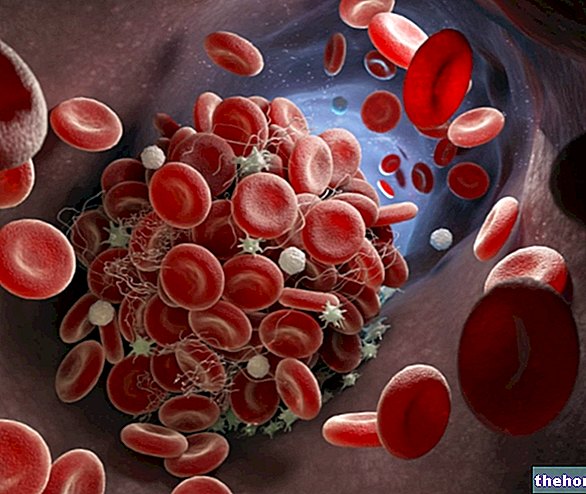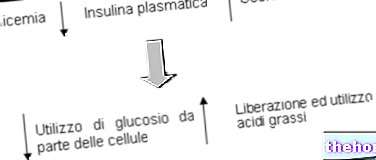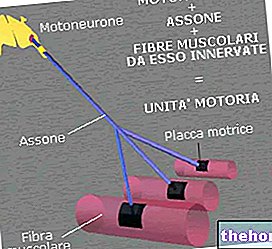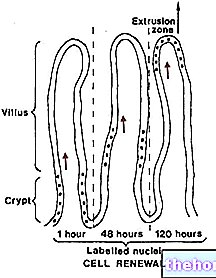Edited by Dr. Davide Sganzerla
The higher centers
Sensory receptors analyze sensory events related to the mechanical, thermal, or chemical stimulation of a part of the body. Once encoded, the information is transferred, through ascending sensory pathways, to the spinal cord and to brain regions that process it and determine its perception.
A sensory pathway can be considered as a set of neurons arranged in series. It is thus possible to recognize, along any path, first, second and third order neurons.
The first order neuron it is the primary sensory neuron; its peripheral end constitutes the sensory receptor; consequently, this neuron responds to stimuli and transmits encoded information to the Central Nervous System. Its cell body is located in the dorsal root ganglia or cranial nerve ganglia.
The second order neuron it is typically found in the spinal cord or brain stem; it receives information from first-order neurons and transmits it to the thalamus. Here the information can undergo a first processing by the local nervous circuits. Normally, the axon of second-order neurons crosses the midline (decussa), whereby sensory information originating in one side of the body reaches the contralateral thalamus.
The third-order neuron it is located in one of the sensory nuclei of the thalamus. Even at this level, information can be processed by local circuits, before reaching the cerebral cortex.

The proprioceptive sensitivity and the tonic-postural system
From the motor point of view, every living being must be able to adapt to the environment in which it finds itself in order to survive and carry out its static and dynamic activity. This adaptation requires the possibility of grasping what is happening in the environment itself and, consequently, of assuming the positions most suited to the situation and to one's own behavioral needs.
We can define posture each of the positions assumed by the body, characterized by particular relationships between the different somatic segments. The concept of posture, therefore, does not refer to a static, rigid and predominantly structural condition; on the other hand, it is identified with the more general concept of equilibrium, understood as the optimization of the relationship between the subject and the surrounding environment, that is, the condition in which the subject himself assumes a posture or a series of ideal postures with respect to the environmental situation, at that particular moment and for the planned motor programs.
Such an important function cannot be entrusted to a single organ or apparatus, but requires an entire system, it is the Tonic-Postural System (S.T.P.), i.e. a set of communicating structures and processes which are entrusted with the task of:
- fight against gravity;
- oppose external forces;
- situate ourselves in the structured space-time that surrounds us;
- allow balance in movement, guide and reinforce it.
To achieve this neuro-physiological "exploit", the body uses various postural receptors with function abroad And proprioceptive, capable of informing the Central Nervous System of their state and of inducing a specific postural response for that particular moment, modifying the state of the muscular kinematic chains, consequently the osteo-articular balances.
These receptors are:
exteroceptors: they are sensory receptors that position us in relation to the environment (touch, vision, hearing), capturing the information that comes there. Thanks to this information we are able to continuously adapt our posture according to the environment that surrounds us. There are three universally recognized receptors: the inner ear, the eye and the plantar skin surface.
The receptors of the"inner ear they are accelerometers, they inform about the movement and position of the head in relation to the vertical gravity. Those located in the semicircular canals perceive angular accelerations (head rotation), while the utricle / saccule system perceives linear accelerations. In order for the information coming from the inner ear to be interpreted by the Postural Tonic System, they must be compared to the proprioceptive information that allows us to know the position of the head in relation to the trunk, that of the trunk in relation to the ankles and above all to the pressure information. breech.
The receptors of the "eye they allow postural stability for antero-posterior movements, thanks to peripheral vision. On the other hand, for the right-left movements, the central vision becomes predominant. Visual entry is active when the visual environment is close. Finally, it is necessary that the visual information is compared to that coming from the inner ear and from the plantar support.
The receptors orthotics they allow to situate the whole body mass in relation to the environment, thanks to pressure measurements at the level of the plantar skin surface. It is rich in receptors, which provide information on the oscillations of the whole body mass and therefore behave as a "stabilometric platform." The plantar information is the only one to derive from a fixed receptor, directly in contact with an immobile environment represented However, information relating to muscular and joint proprioception is also collected at the level of the foot;
proprioceptors: as previously mentioned, these sensory receptors inform the Postural Tonic System of what happens inside the individual. They allow the system to recognize the position and state of each bone, muscle, ligament, or organ in relation to equilibrium. They inform in particular about the position of the cephalic exoreceptors (inner ear and retina) in relation to the breech exoreceptor . The oculo-motor entrance it allows to compare the position information provided by the vision to those provided by the inner ear thanks to the six oculo-motor muscles, which ensure the motility of the eyeball. The rachid entry its purpose is to inform the postural system on the position of each vertebra, therefore on the tension of each muscle. The proprioceptive breech entrancethanks to the control of the stretching of the muscles of the foot and the leg, it situates the body in relation to the feet. The rachid entry and the breech proprioceptive entry form a functional continuity, an extended proprioceptive chain that brings together the cephalic receptors to the breech receptors, thus allowing to place the inner ear and the eyes in relation to a fixed receptor constituted by the feet. This allows a codification of the cephalic space-time information;
higher centers: they integrate the strategy selectors, the cognitive processes and re-elaborate the data received from the two previous sources.
Motor and postural control is organized according to mechanisms of feedback (feedback, automatic, constant and circular readjustment to each endogenous modification) and of feedforward (basic adaptation to behavioral models and action prediction).
Other articles on "Proprioceptive sensitivity and the tonic-postural system"
- Proprioception and proprioceptive sensitivity
- Posture and postural control
- Posture and muscle tone










.jpg)


















